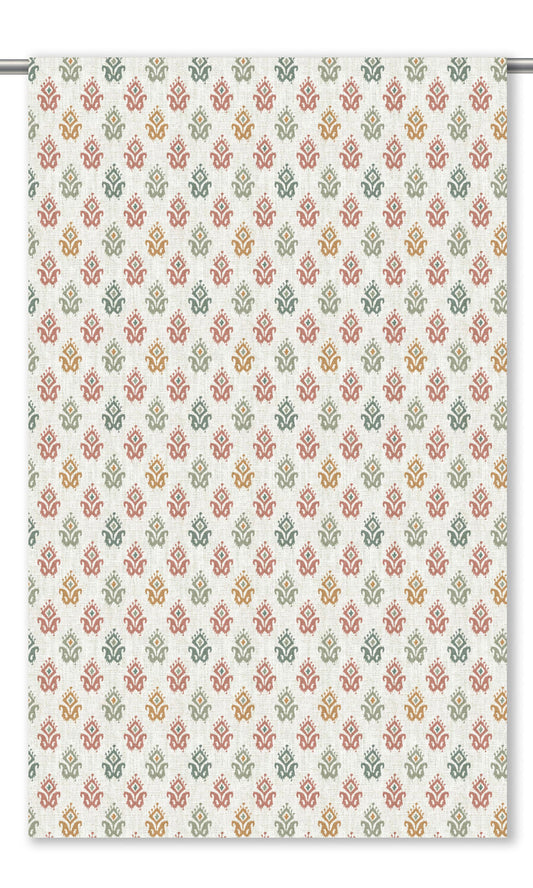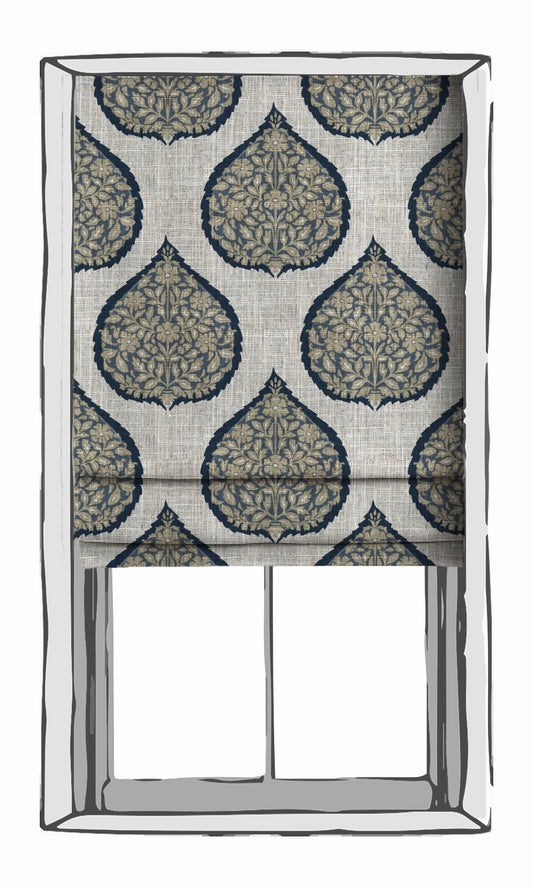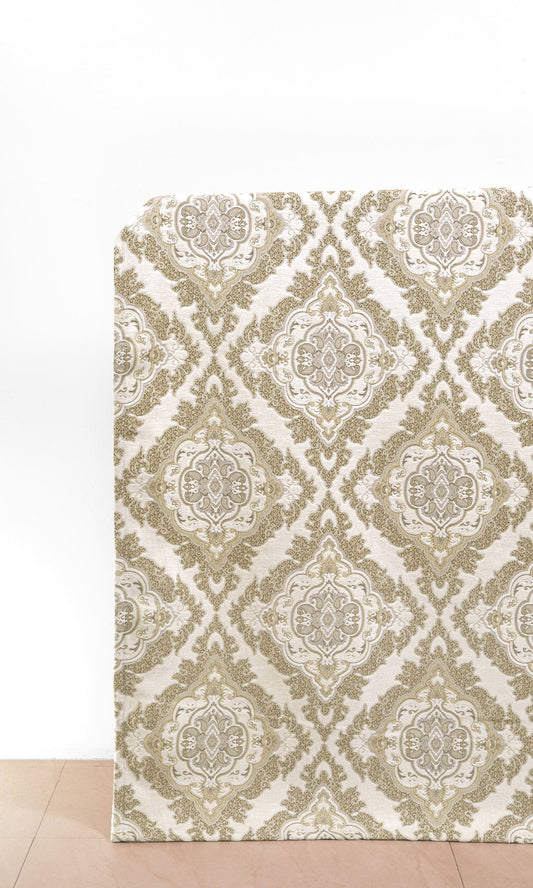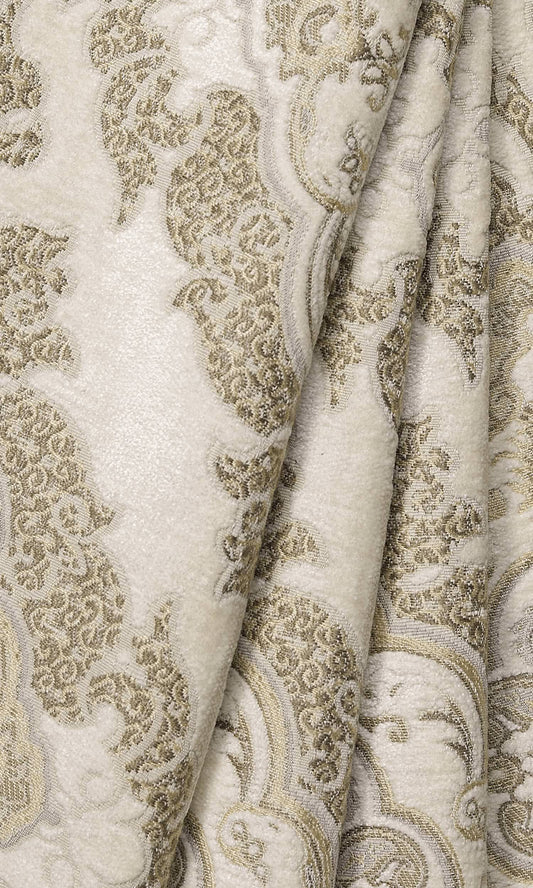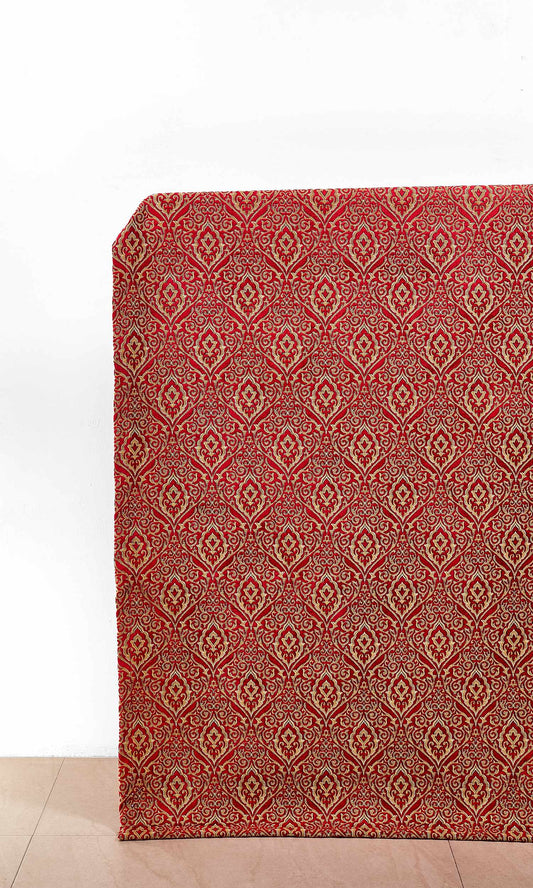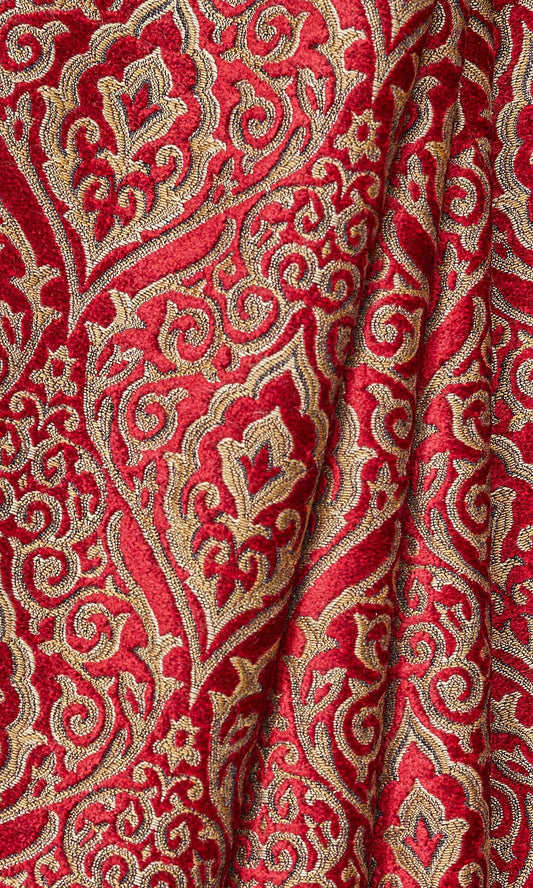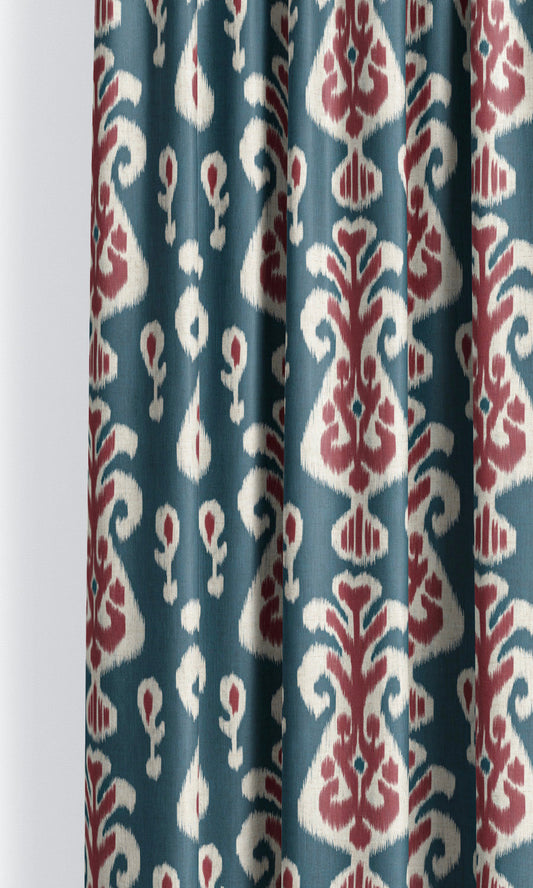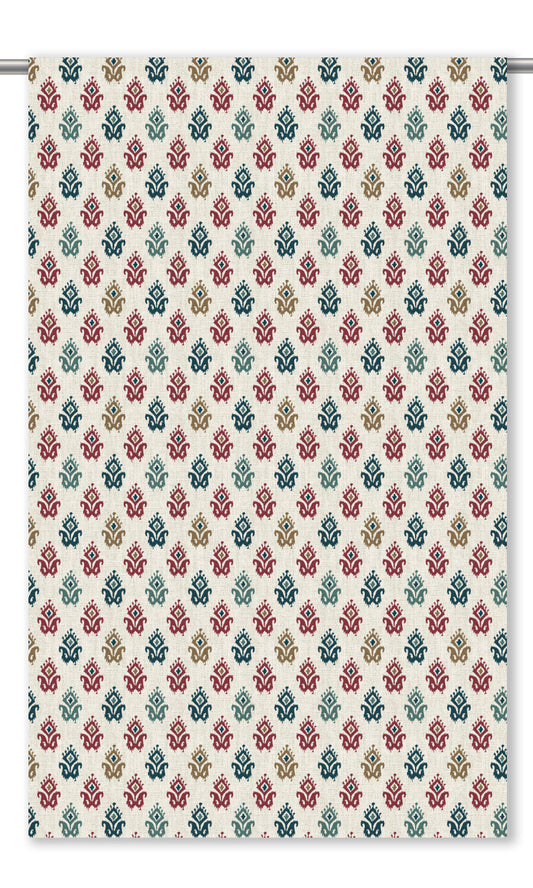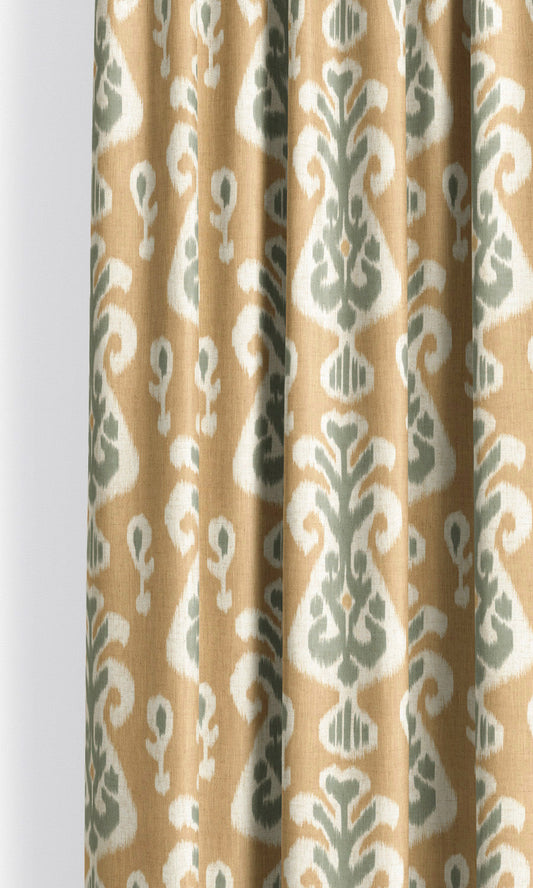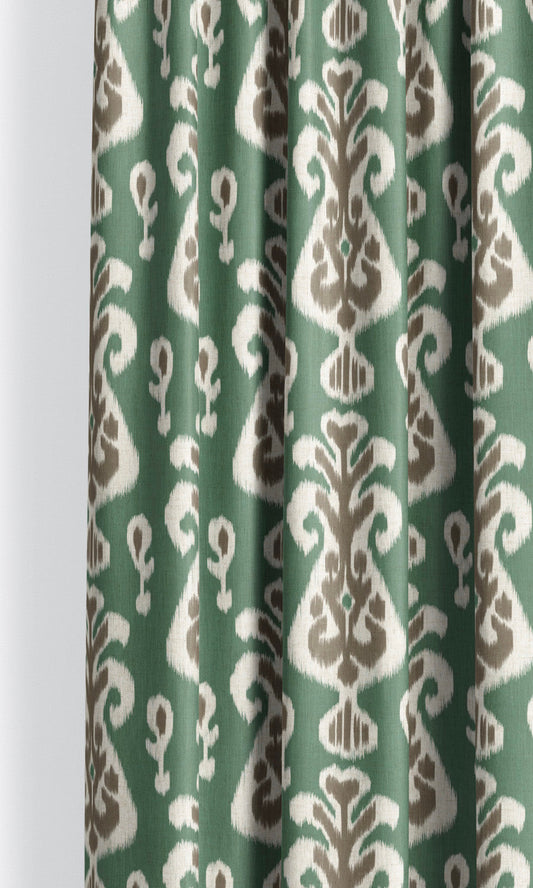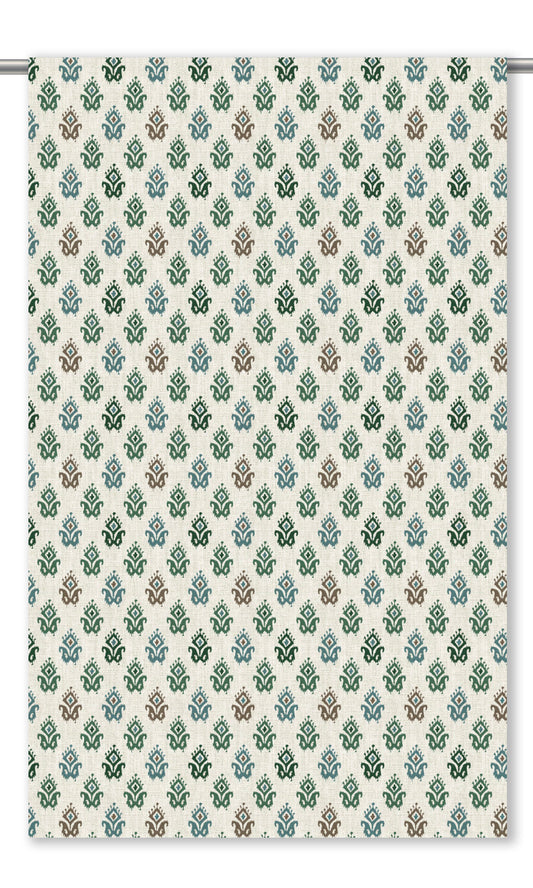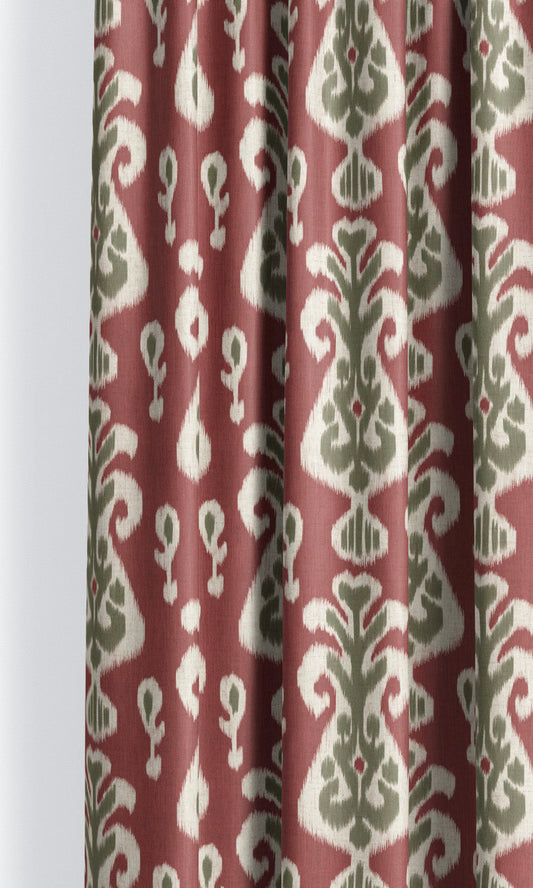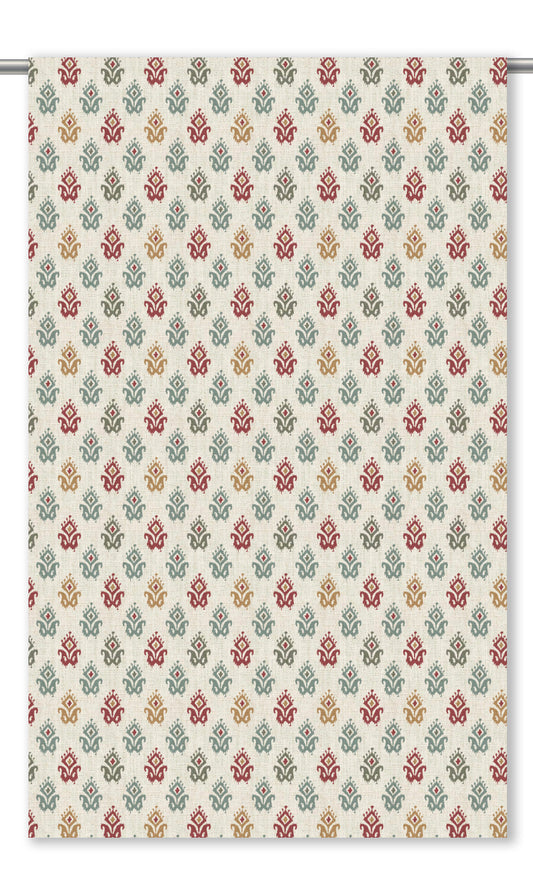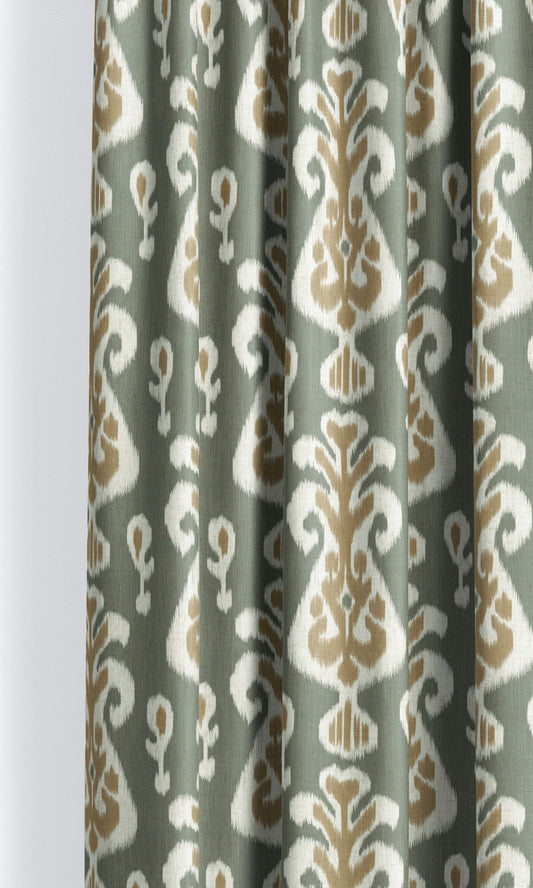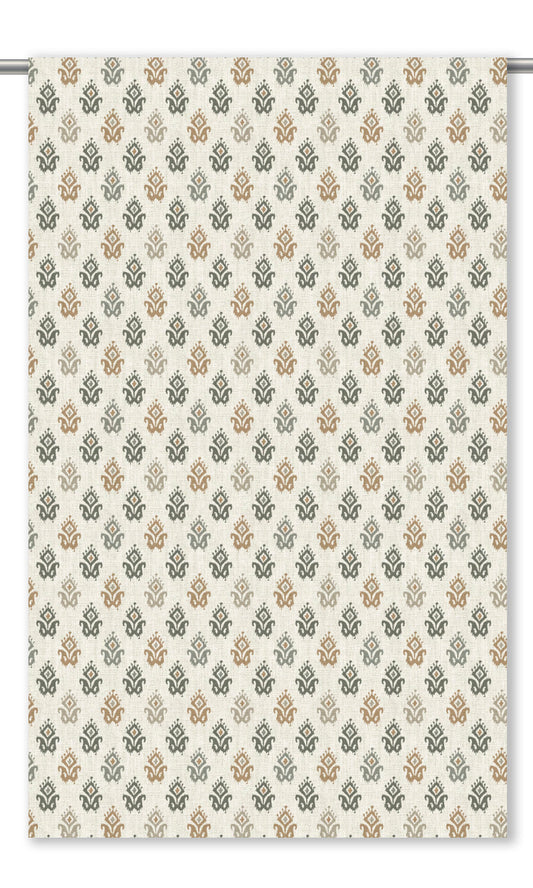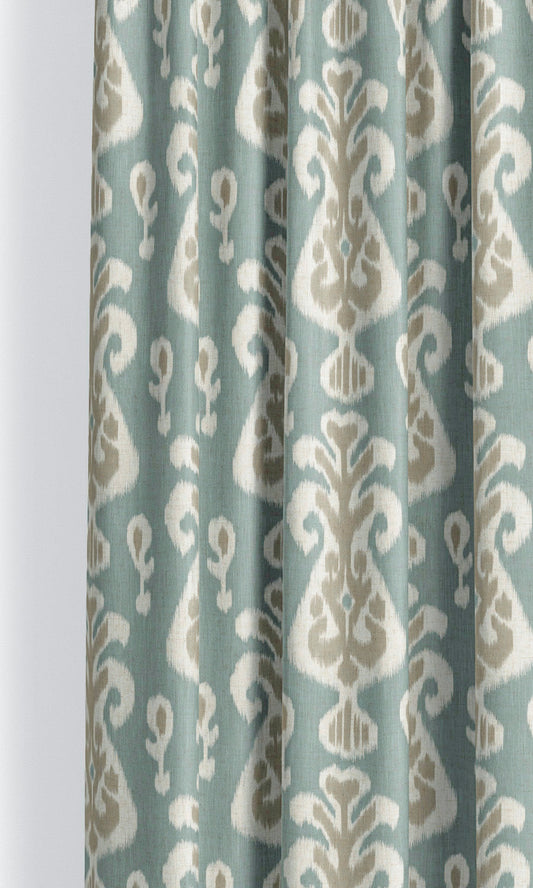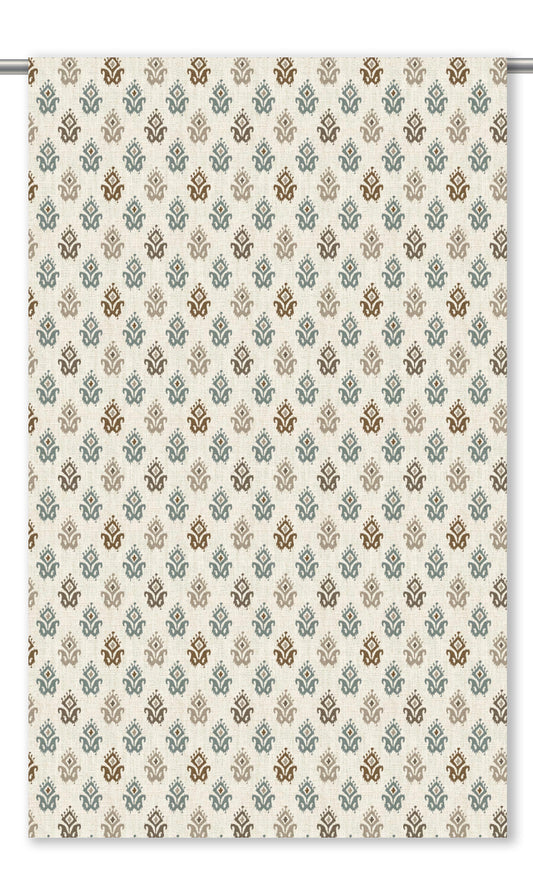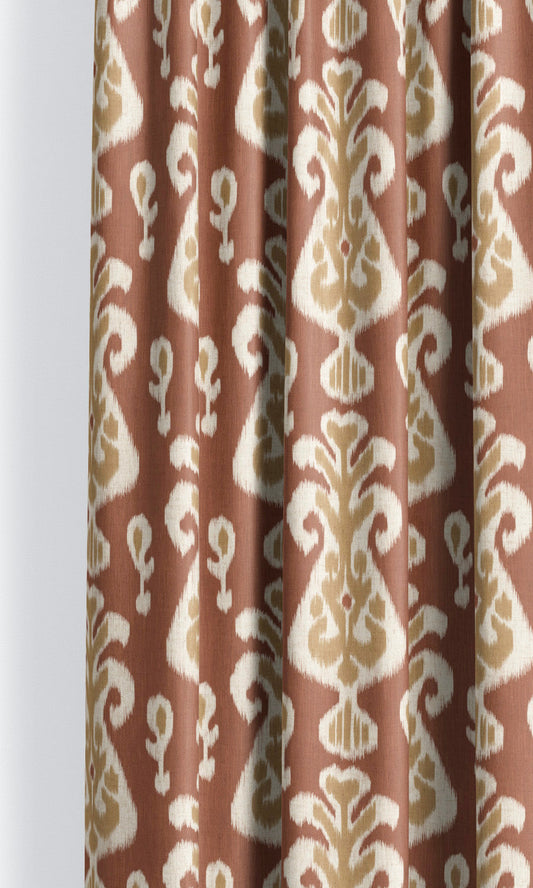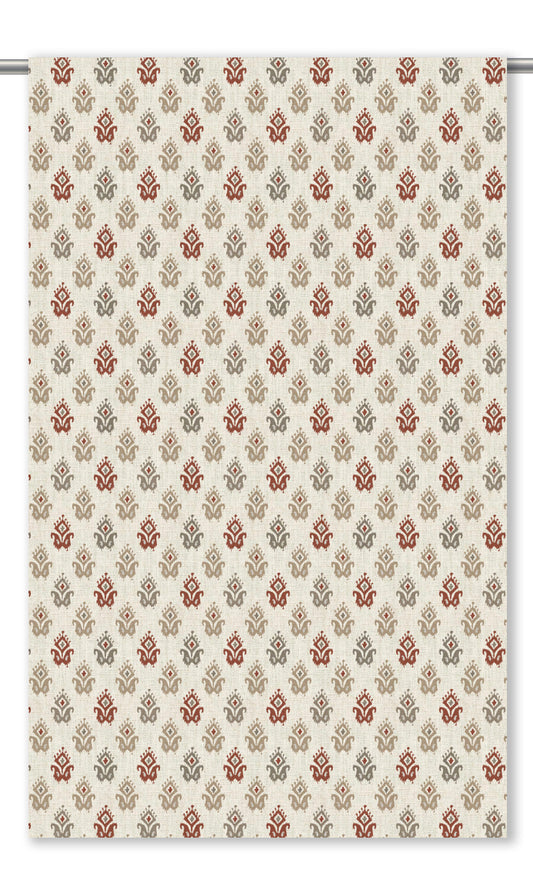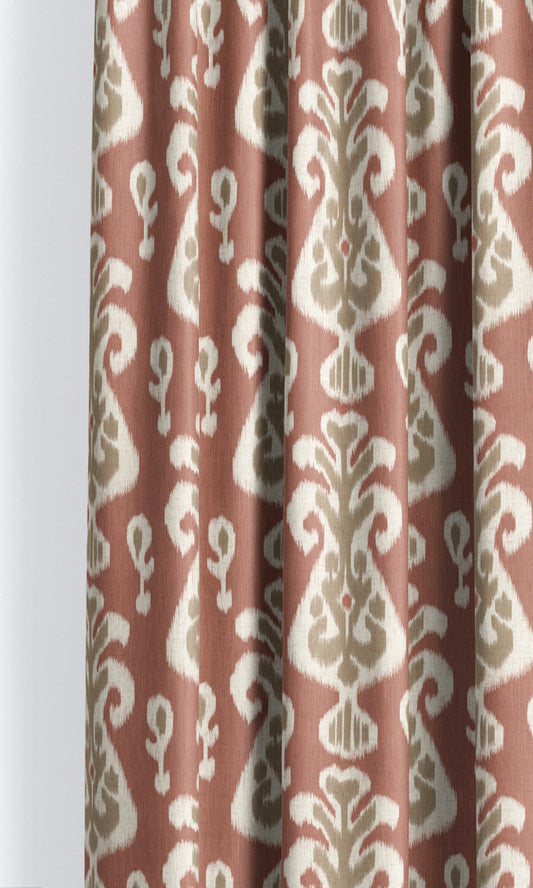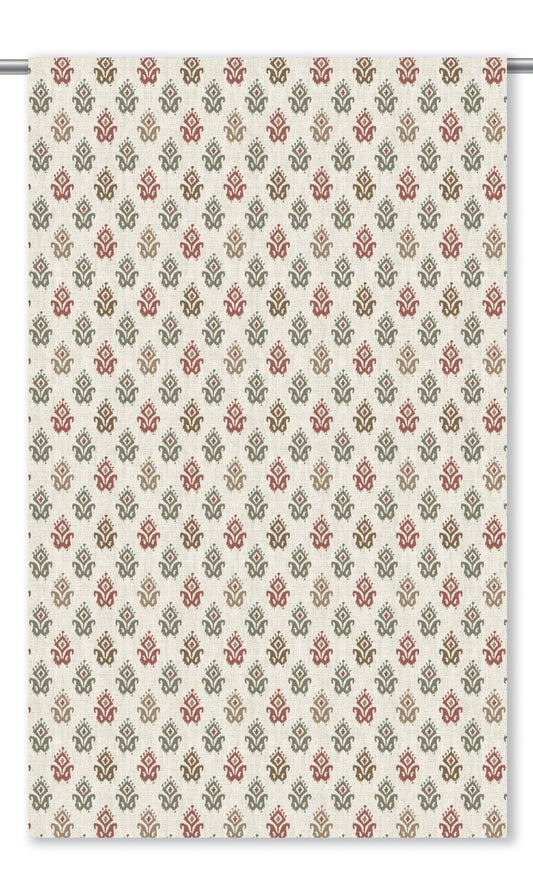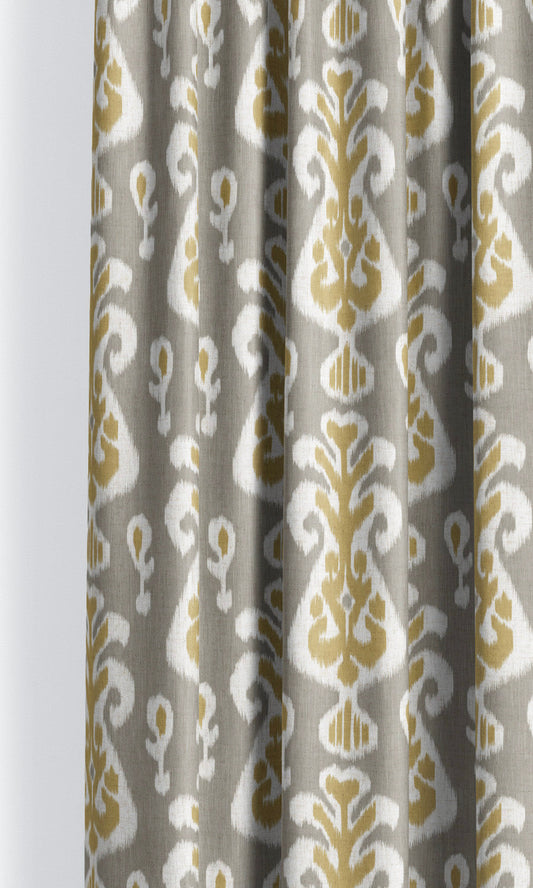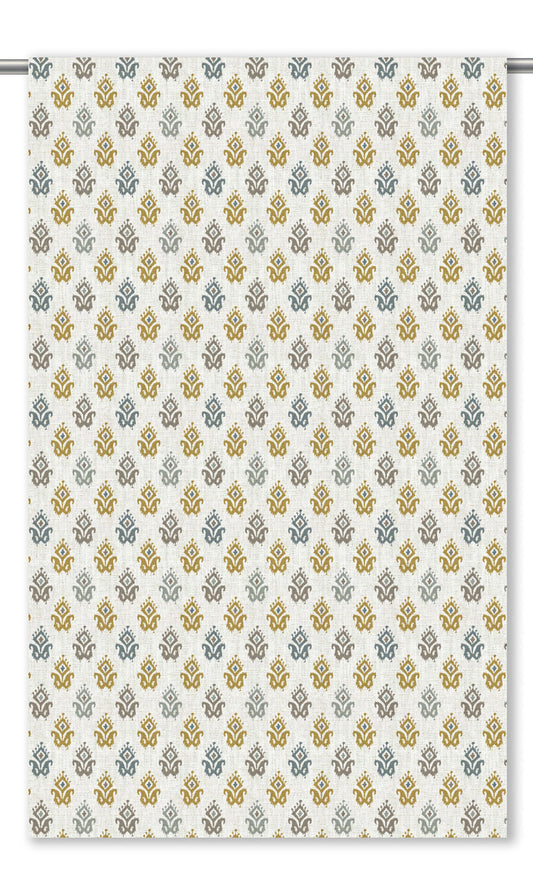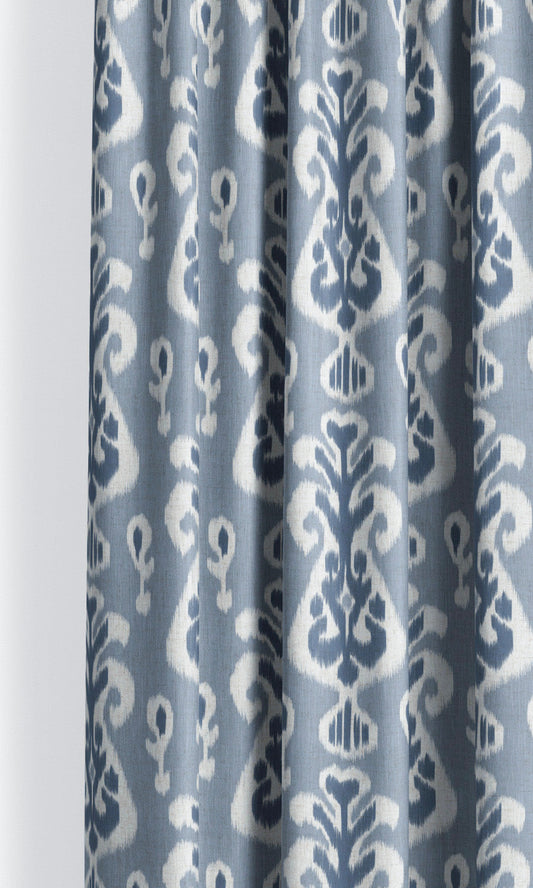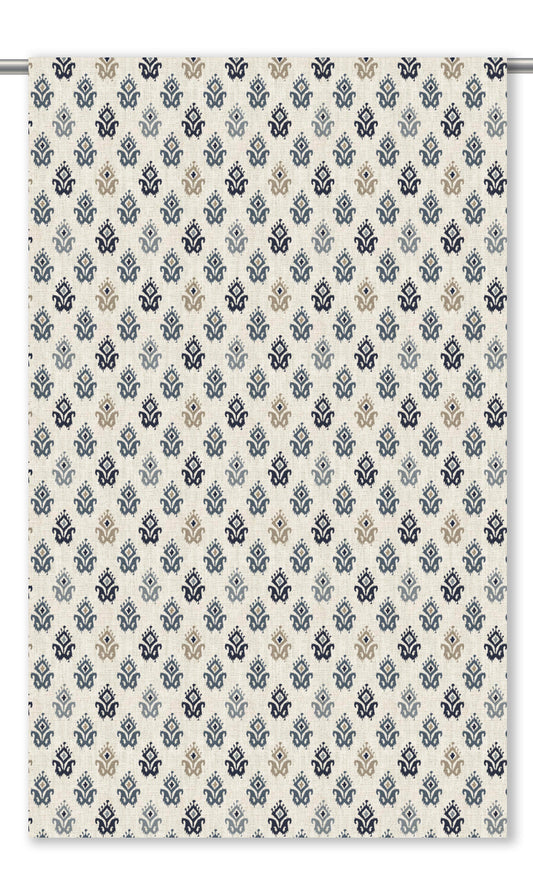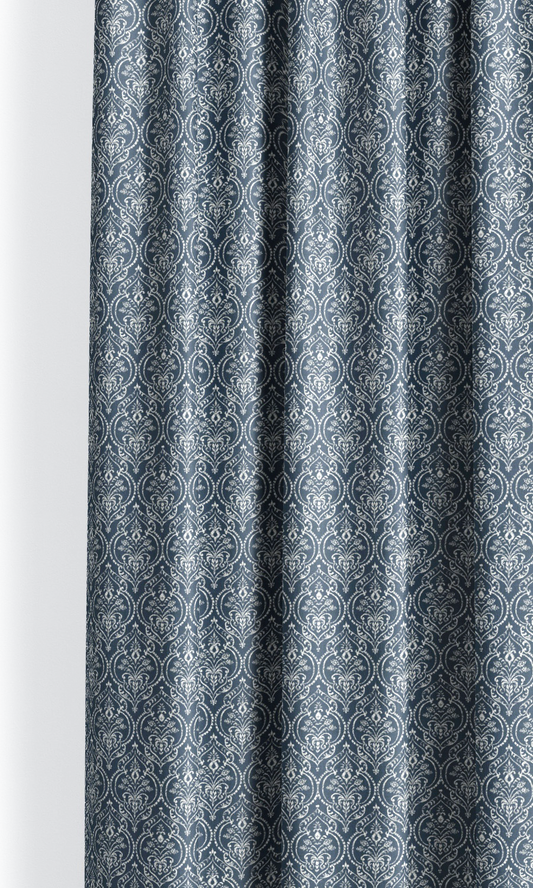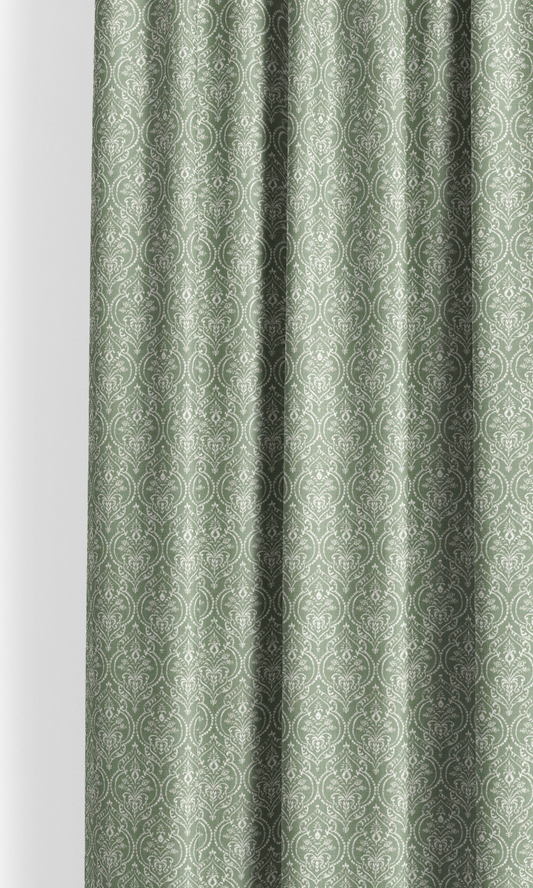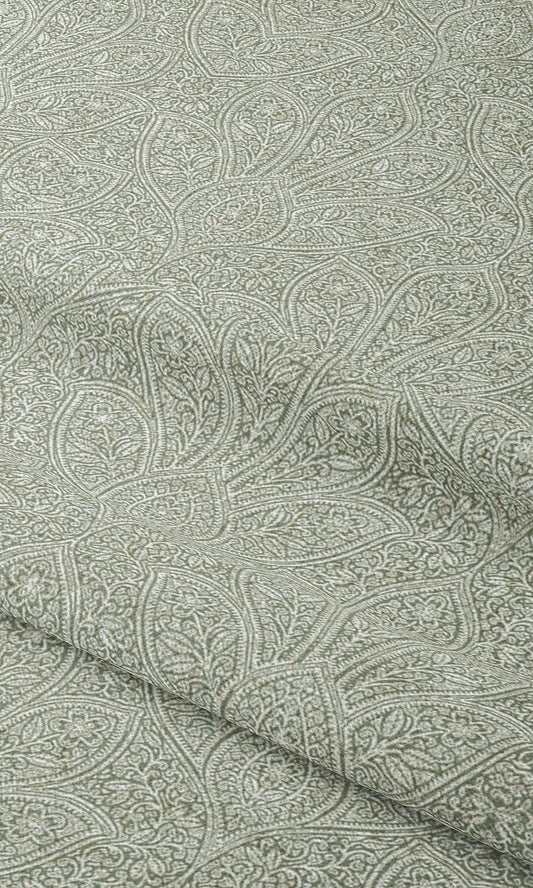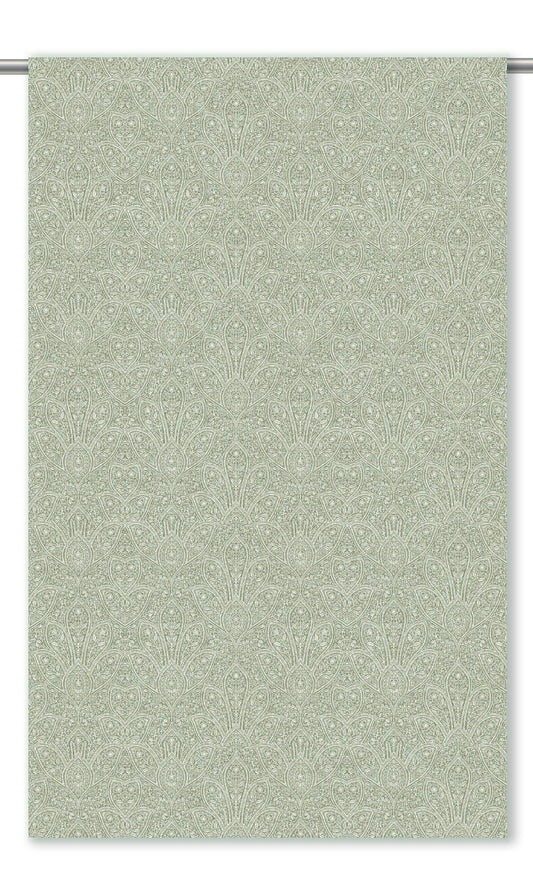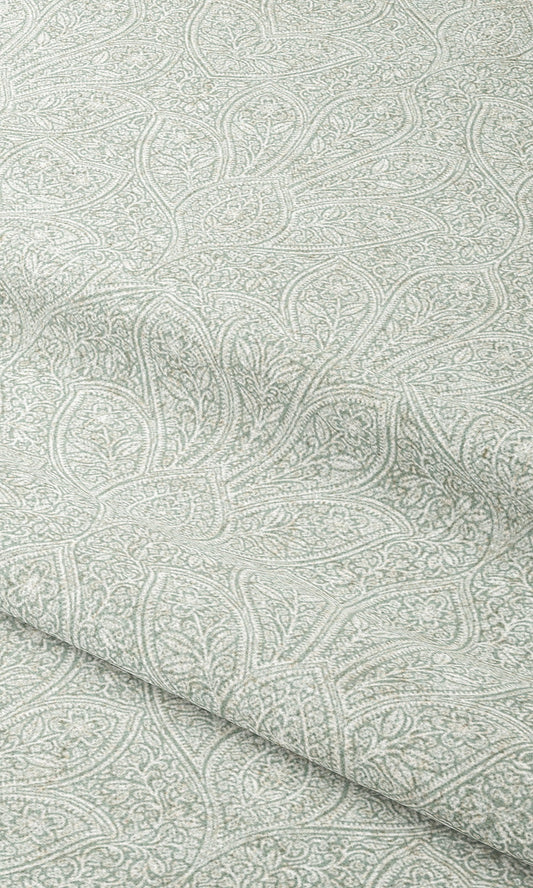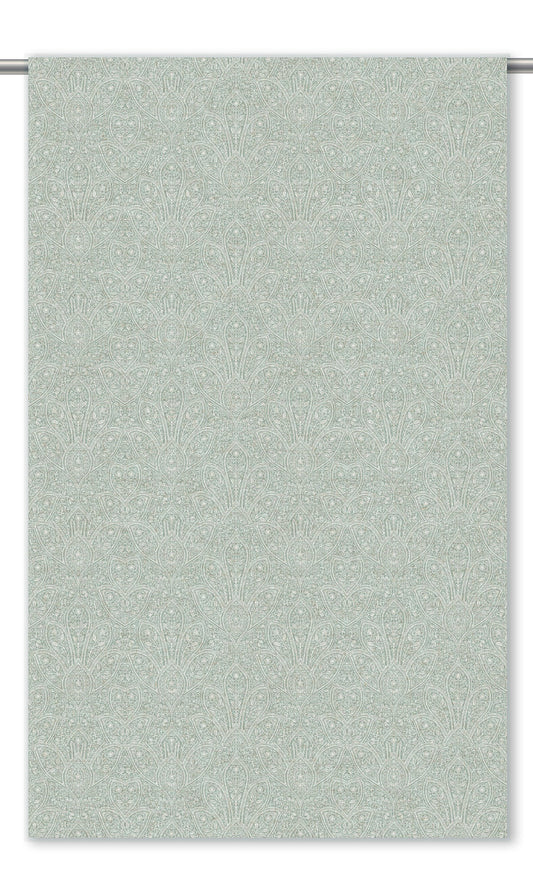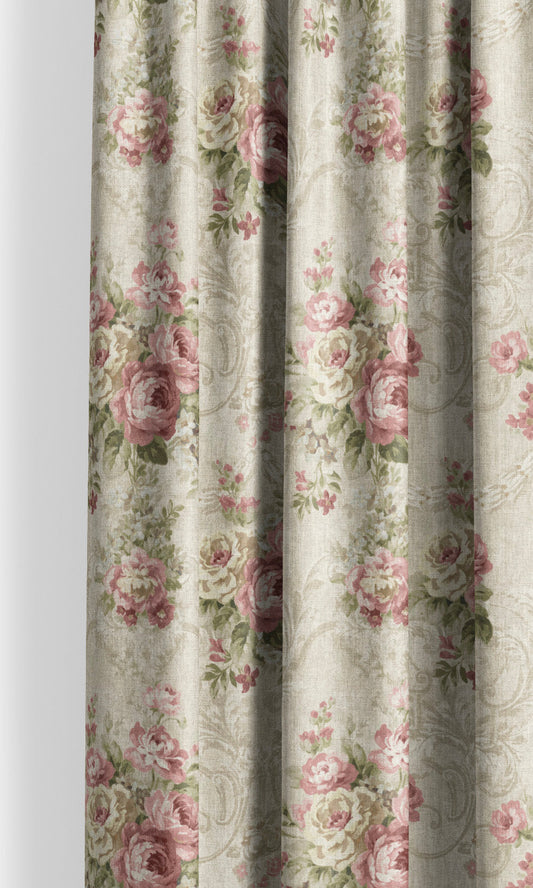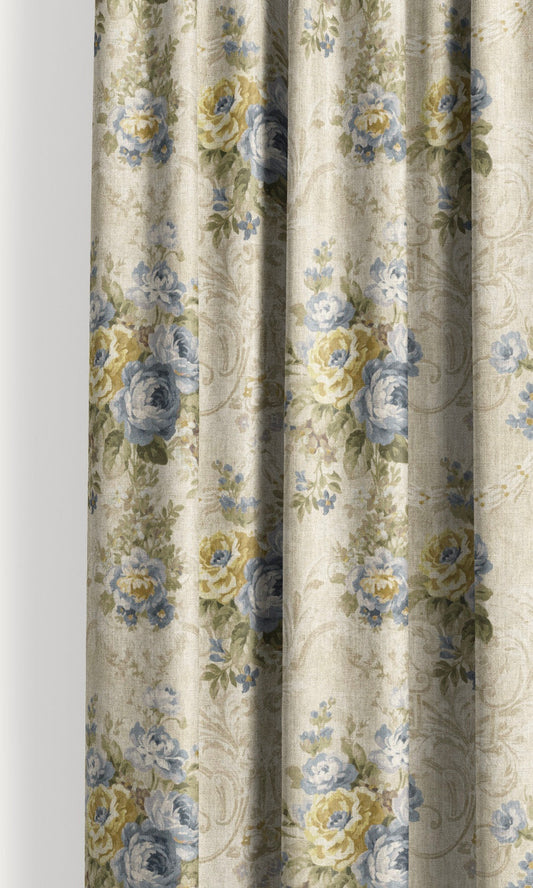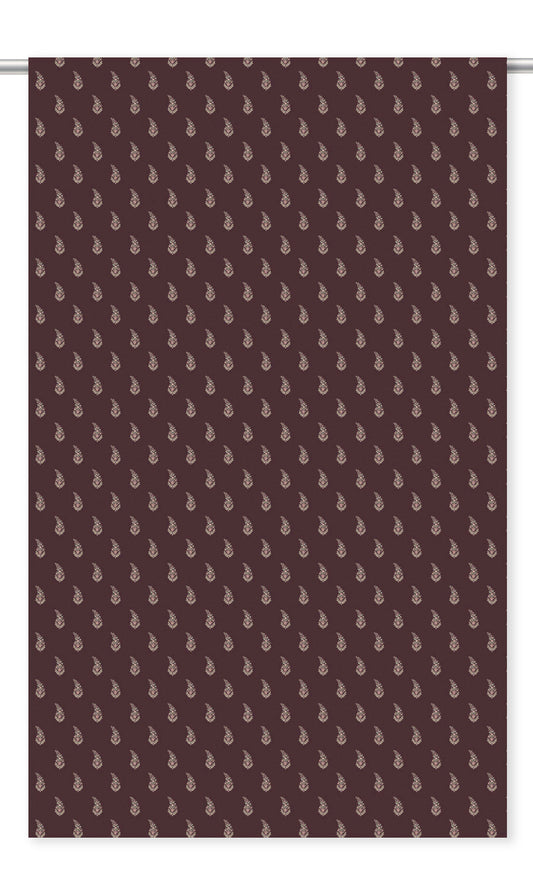Heirlooms woven into fabric
Not many patterns can tell a story like damasks and paisleys do. Damask speaks of palatial grandeur, grand ballrooms, and candlelit soirées. While paisley is a free-spirited muse — its swirling teardrops brimming with the energy of centuries-old art reimagined for modern elegance.
Adjectives crowd the room when one tries to eulogize damasks and paisleys — a bohemian rhythm, a palace’s pride, a spirited dance, a lyrical poem; the list goes on. While damask’s symmetry echoes traditional poise, paisley’s curling shapes brim with stories of artistic rebellion.
And when these personality-packed patterns grace your curtains, they become statement features in themselves. But the key lies in making the right choices when picking these classical patterns to keep the look curated, not cluttered. So, whether you are drawn to the stately presence of damask drapes or the playful punch of paisley curtains, our stylists are here to assist you with design decisions in bringing out the best of these timeless beauties. But first, let us indulge you in a quick history of these heritage patterns so you’ll have a story to tell when guests inevitably ask about them.
MORE FROM THE STORE: Damask & Paisley Roman Shades | Toile & Chinoiserie Curtains | Floral Curtains
The Tale of Two Motifs: History of Damask & Paisley
Originating in the ancient weaving capitals of the Middle East, damask takes its name from Damascus, the ancient Syrian city that traded this luxurious patterned fabric along the Silk Road in the Middle Ages. Traditionally, the word ‘damask’ referred to the style of weave - not a pattern - created with a blend of satin and plain weaves. Over time, its intricate florals, medallions, and arabesques became so iconic that damask came to be identified as a motif itself. Today, while the original silk-weave tradition remains alive on heritage textiles, most damask fabrics, including ours, feature the ‘pattern’ on modern, versatile fabrics.
Not so far away, in Persia, another iconic motif emerged - ‘the boteh’- a stylized teardrop with eye-capturing details. Carried to India, it graced Kashmiri shawls, which reached Europe via the East India Company in the 17th century. Its swift rise in the elite fashion scene spurred mass production in the Scottish town of Paisley, which ultimately lent the motif its name. Since then, paisleys have had quite the social life: dressing royals, swirling through bohemian parlours, and, in true rock-and-roll style, cruising the streets of London on John Lennon’s Rolls-Royce. What more proof does one need to testify that some patterns never lose their cool?
Now that you know (a fraction of!) their storied lives, we might as well start with styling. Ready with your notepads? Let’s go!
Curtain Alchemy: Balancing Scale, Color, and Layout
Every damask and paisley curtain is a ballad of grandeur, culture, and history. Whether it hums or resounds will depend on the chemistry between the pattern’s scale, palette and layout. These three are the essentials of the score—only when they strike the right balance will the fabric harmonize with the room. Overdo the size, contrast or detail of the motif, and the poetry will fade into a background murmur. Balance is the true maestro here. So, if you want your damask and paisley curtains to strike the perfect chord, keep these design notes in mind:
THE SECRET OF SCALES: RING IN THE RIGHT PROPORTIONS
Think of scale as the rhythm of the song—it sets the pace and grounds the melody. The trick lies in matching the scale of the motif to the proportion of the space.
Just like a grand chandelier in a small cottage kitchen, the wrong scale of paisleys and damasks on a window can throw the whole look off balance. Larger patterns such as Oria and Rebecca are ideal for rooms with expansive windows and generous dimensions. In such settings, the bold scale reads intentional and architectural.
However, the same fabric will make a smaller window or compact room feel even smaller. This, amigo, is where smaller-scaled motifs come into their own. Our drapes with small-scale damask motifs like the cotton Banas offer all the charm without overwhelming the space, keeping the dimensions proportionate and the look harmonious.
THE CASE OF COLORS: PICK YOUR PALETTE WISELY
If scale sets the rhythm, color decides the volume. So, hype the tones and their contrast, if you want the curtains to prolong a glance into a gaze. And, notch down the color game when you want your curtains to hum along with the room.
Saturated hues like ruby red, sapphire blue, or deep emeralds build to a crescendo against soft neutrals like white, cream, beige, and the like. These bold tones and sharp contrasts make it ceremonious and dramatic, transforming the curtains into the default focal point.
On the other hand, soft shades and low contrast recede like background music. Sticking to delicate neutral hues, tone-on-tone renditions, or self-patterned fabrics keeps the curtains’ presence subtle and sets the stage for other elements of the room to shine.
THE MATTER OF LAYOUTS: CHOOSE BETWEEN SPARSE & DENSE
If scale is the tempo and color the volume, the layout is the orchestration that decides whether your motifs play like a seamless melody or solo notes with spaces to breathe. That’s why the pattern’s layout is just as influential as the palette or scale.
An all-over layout, where the pattern repeats with minimal spacing, floods the surface with the motifs, creating a sense of opulence. It’s excellent for tall rooms, grand windows, or expansive, open spaces. Because the motifs are close together, the focus shifts from individual shapes to the overall interplay of color and texture.
A sparser, “island-style” layout, by contrast, gives each motif breathing room. With more negative space, the eye lingers on the individual motifs, making them ideal for showcasing the pattern. This approach works best when you want the pattern itself to be the focal point, especially in smaller rooms, on feature windows, or in interiors with several competing elements where a dense layout might feel busy.
IN SUMMARY...
Whether your damask and paisley curtains become a focal point or not depends on the combination of scale, color, and layout, and how it works with the rest of the decor. Even a neutral-toned curtain may make your curtains a compelling centerpiece if their scale or contrast is high. And, with the starkest of contrast, a motif may still be demure when paired with a modest scale and scattered layout. So, when choosing the curtains, consider how they will sync with your decor, and whether you want them to lead like a vocalist or blend with the choir.
Twin Classics, Endless Possibilities: Making Damask and Paisley Your Own
Damask and paisley carry tradition in every fiber, yet they are far from confined to heritage homes. Their knack for blending with diverse eras and decor styles proves that they are not just globe-trotters but time travelers as well. In classical settings, they strut boldly across the room, while in modern homes, they tiptoe quietly in the background, and where old and new converge, they tightrope confidently between styles, weaving eclectic expression through tradition. So, no matter the architecture or design style, damask and paisley curtains can settle in and shine—here’s how:
RELISH IN THE REGALE: GO TRADITIONAL WITH DAMASK & PAISLEY CURTAINS
Whether you’re dressing up a period home in heritage textiles or weaving classical touches into a modern-day townhouse, paisley and damask curtains remain a timeless gateway to historic palettes and gilded flourishes.
Look for powder blues, sage greens and warm creams, enriched with deep red and gold details for a true Georgian-style indulgence where wall treatments often embraced pastels to highlight architectural finesse. Or, invite Victorian drama with velvety burgundies and deep emeralds, touched with regal gold embellishments - the very tones that might have once framed a palace ballroom window.
Then, choose heading styles like pinch pleats or goblet pleats, that add tailored structure and sophistication, perfectly complementing the lavish opulence of damask and paisley. Consider letting your drapes puddle gracefully on the floor for a truly decadent, flowing look.
Pair your curtains with statement hardware to further enhance their impact. Choose show-stopping, traditional curtain rods and finials in gilded bronze, or crystal finishes to echo the rich textures of the fabric. If you already have hardware installed that doesn’t match the elevated aesthetic of your new drapes, consider investing in custom valances. Not only does this create a more cohesive and visually stunning look, but it also improves the functionality of the window treatment as a whole, offering better light control and insulation.
CONTEMPORIZE THE CLASSICAL: FINE-TUNE THE FACADE TO MAKE 'EM MODERN
Damasks and paisleys may have centuries-old pedigrees, but they slip effortlessly into modern interiors once you fine-tune a few details. To ‘contemporize the classical’, consider these stylistic changes.
Swap traditional palettes like reds and golds for muted and/or neutral hues. Muted shades, low contrasts, and tone-on-tone patterns feel distinctly modern, lending softness and restraint to a space where minimalism and light reign.
Pare down the drama by trimming the detail in the motif itself. Stencil-style adaptations of traditionally ornate damask and paisleys offer a modern take on these patterns. Clean-lined silhouettes and abstracted versions lend the classical motif a contemporary edge by replacing intricacy with simplicity.
Then, swap ornate headings, such as French pinch pleats, for their sleeker cousins, the euro pinch pleats, to curate a more up-to-date look.
To wrap up, edit their surroundings. Let your damask or paisley curtains fall beside mid-century furniture with clean lines and no carved embellishment. Choose slim matte-black poles over ornate wooden poles and finials. And just like that, your damask and paisley curtains would have time-traveled into a new, modern era.
To Sew It Up
Whether you are looking for a bit of playful whimsy or a lot of classical drama, our collection of damask drapes and paisley curtains is home to options galore. And now that you know how to choose the right patterned fabric for your space, nothing should keep you from diving headlong into Sewn’s exquisite collection of paisley and damask drapery. Go ahead — explore, fall in love, and make it yours. Your next great home addition is just a click away!



